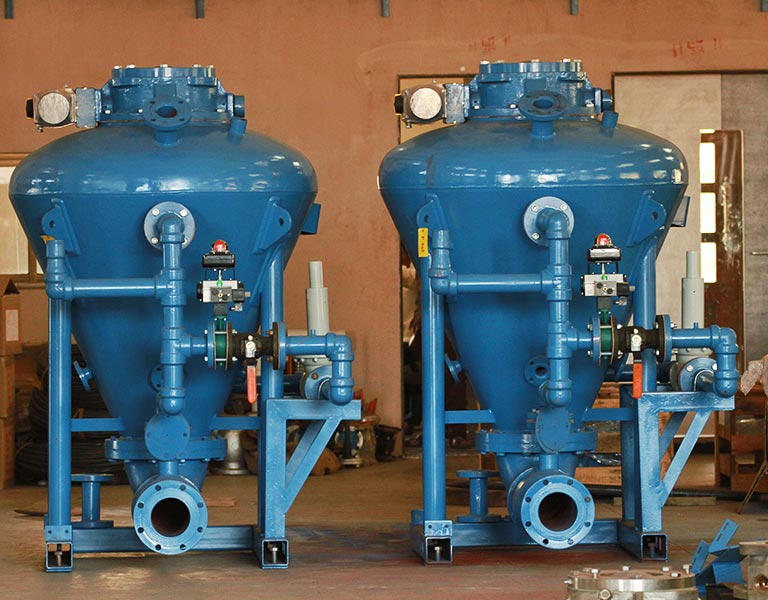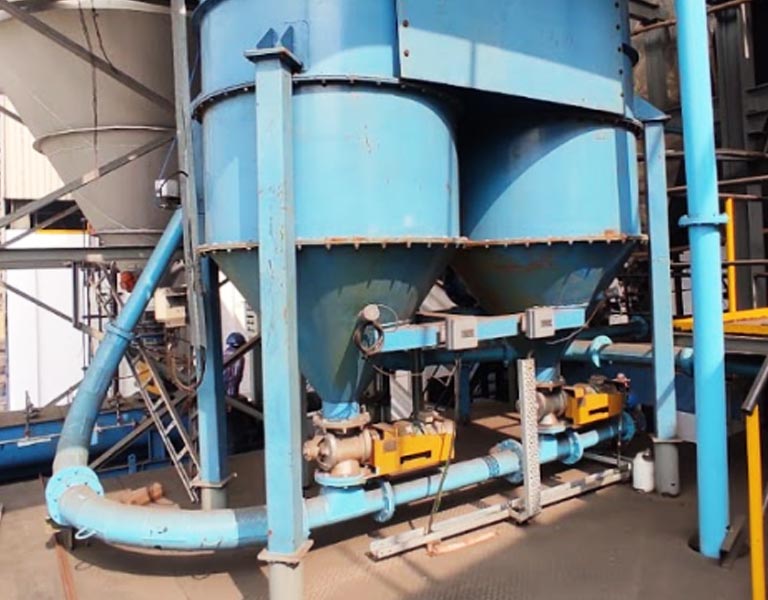Exploring the Varied Realms of Pneumatic Conveying: Dense Phase vs. Dilute Phase Systems
Author : Macawber India | Published On : 27 Apr 2024
In the realm of material handling and processing industries, the efficiency and effectiveness of conveying systems play a pivotal role in optimizing operations. Among the diverse array of conveying methodologies available, pneumatic conveying stands out for its versatility and adaptability to a wide range of materials, from fine powders to granular substances. Within this pneumatic domain, two primary systems emerge as leading contenders: Dense Phase and Dilute Phase Conveying.
A pneumatic conveyor manufacturer keen on enhancing material transfer efficiency must navigate the nuances between these two systems to determine the most suitable solution for specific applications. Let's delve into the intricacies of Dense Phase and Dilute Phase Conveying, understanding their disparities and the scenarios where each excels.
Dense Phase Conveying: Precision in Motion
Dense Phase Conveying epitomizes precision and gentle handling of materials. Characterized by a high solids-to-air ratio, this method ensures the material moves in a compact, slug-like manner through the pipeline. The primary distinction lies in the conveying velocity, which remains considerably lower compared to its dilute phase counterpart.

In Dense Phase Conveying, the material is propelled through the pipeline in batches, minimizing the risk of degradation and ensuring intact delivery. This makes it an ideal choice for fragile or abrasive substances where maintaining particle integrity is paramount. Furthermore, Dense Phase Conveying boasts superior energy efficiency, as it requires less air volume due to the lower conveying velocity.
Dilute Phase Conveying: Speed and Versatility
Contrary to Dense Phase Conveying, Dilute Phase Conveying operates at higher velocities, with a lower solids-to-air ratio. This results in a more dispersed flow of material through the pipeline, resembling a fluidized state. Dilute Phase systems excel in handling free-flowing materials over long distances and vertical lifts, making them suitable for applications requiring rapid transfer rates.

The versatility of Dilute Phase Conveying shines through its ability to accommodate a wide spectrum of materials, from fine powders to granular substances. However, it's essential to note that the higher conveying velocities inherent in Dilute Phase systems may pose challenges with delicate materials, potentially leading to degradation or attrition.
Key Differences: Choosing the Right System
When evaluating Dense Phase vs. Dilute Phase Conveying systems, several crucial differentiators come to light:
-
Material Characteristics: Dense Phase Conveying is best suited for fragile, abrasive, or cohesive materials, ensuring gentle handling and minimal degradation. On the other hand, Dilute Phase Conveying thrives with free-flowing materials but may struggle with cohesive substances prone to build-up.
-
Conveying Distance and Vertical Lift: Dilute Phase Conveying excels in long-distance and vertical conveying applications, offering higher transfer rates and efficiency over extended pipelines. Dense Phase Conveying, with its slug-like movement, is better suited for shorter distances and applications requiring precise material delivery.
-
Energy Efficiency: Dense Phase Conveying typically requires less compressed air compared to Dilute Phase systems, translating to lower energy consumption and operating costs, particularly in applications with frequent start-stop cycles.
-
Maintenance and System Complexity: Dilute Phase Conveying systems often involve simpler designs and lower maintenance requirements due to their continuous flow nature. In contrast, Dense Phase Conveying systems may necessitate more frequent maintenance intervals, especially in applications with abrasive materials.
Application Considerations: Finding the Perfect Fit
Selecting the optimal conveying system hinges on a comprehensive understanding of the application requirements and material characteristics. A pneumatic conveyor manufacturer must meticulously assess factors such as:
- Material Type and Properties: Consider the flow characteristics, particle size, abrasiveness, and cohesion of the material being conveyed.
- Conveying Distance and Layout: Evaluate the distance to be covered, vertical lifts, and any layout constraints to determine the most suitable conveying method.
- Transfer Rate and Efficiency: Determine the required throughput and efficiency targets to match the system's capabilities with operational demands.
- Operating Environment: Factor in ambient conditions, temperature variations, and potential hazards to ensure system reliability and safety.
By aligning these considerations with the unique strengths of Dense Phase and Dilute Phase Conveying systems, manufacturers can engineer bespoke solutions tailored to specific application needs.
Conclusion: Navigating the Pneumatic Conveying Landscape
In the dynamic landscape of material handling, the choice between Dense Phase and Dilute Phase Conveying systems represents a critical juncture for pneumatic conveyor manufacturers and end-users alike. While Dense Phase Conveying offers precision and gentleness in material handling, Dilute Phase Conveying boasts versatility and speed over extended distances.
Ultimately, the selection process boils down to a meticulous analysis of material characteristics, conveying requirements, and operational parameters. By leveraging the inherent strengths of each conveying system, manufacturers can optimize material transfer efficiency, enhance productivity, and propel their operations towards greater success in the ever-evolving industrial landscape.
As pneumatic conveyor manufacturers continue to innovate and refine their offerings, the distinction between Dense Phase and Dilute Phase Conveying systems serves as a guiding beacon, illuminating the path towards efficient and reliable material handling solutions tailored to the diverse needs of modern industries.
